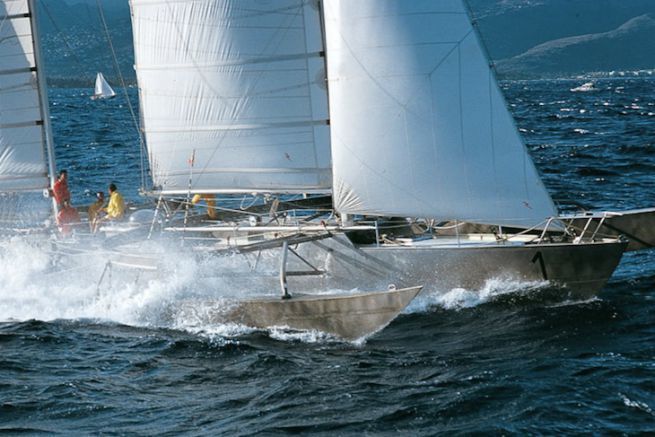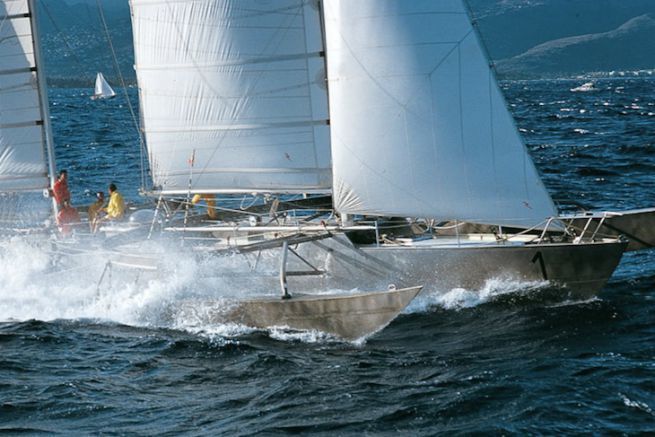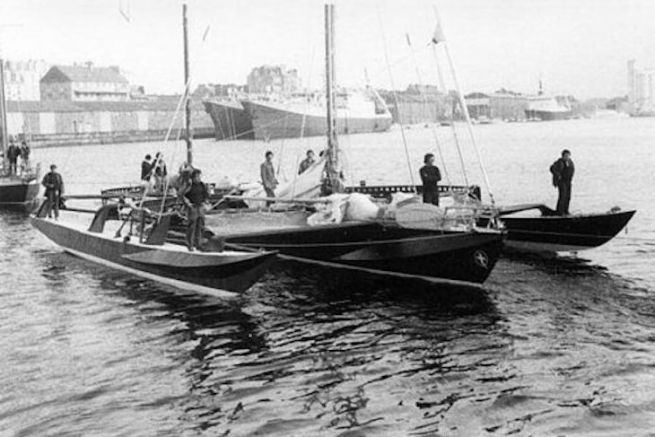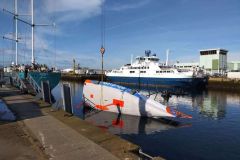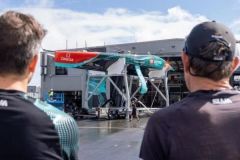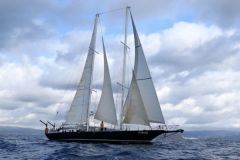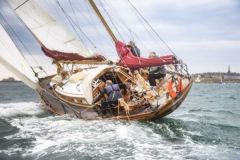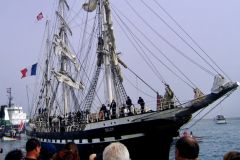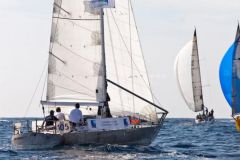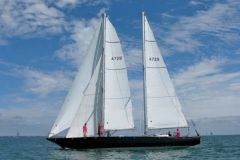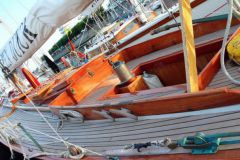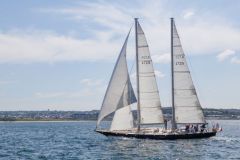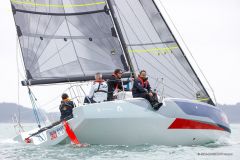The beginnings of the offshore multihull
It was during a delivery trip on the trimaran Toria with the architect Dereck Kelsall that Eric Tabarly became aware of the capabilities of the offshore multihull. The trimaran on which he sailed won the first Two-Handed Round Britain Race of the Royal Western Yacht Club in 1966 and the 5 e place on the OSTAR. Capable of sailing at speeds much higher than a monohull, it is also less canvas, lighter and therefore more easily maneuverable single-handed.
While he is still sailing on Pen Duick III, he is convinced of the potential of the multihull. Even if we find some of them on the first Transat, none of them has yet been able to change the deal, more at ease downwind... However Tabarly believes in it... And the opening of the Open classes gives him the opportunity to make his intuition more reliable.
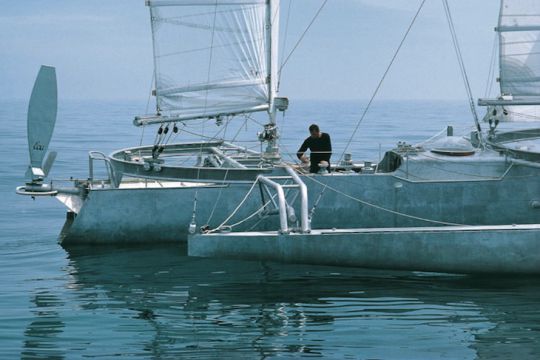
Eric Tabarly's 1st trimaran
For the 1968 edition of the Transat, he launched the construction of Pen Duick IV, an aluminum trimaran 20 m long and 10 m wide, equipped with rotating masts. But no boat of this kind had ever been designed, and it was necessary to be avant-garde in order to create what would be called the "giant octopus". Tabarly called on the Marseille architect André Allègre to design this boat. Tests were carried out in the hull tank to validate the boat's architecture and an architectural firm from Nantes assisted the skipper in his choice of structure. With the strikes of May 68, Pen Duick IV was hardly ever built at the Chantiers de la Perrière, in Lorient.
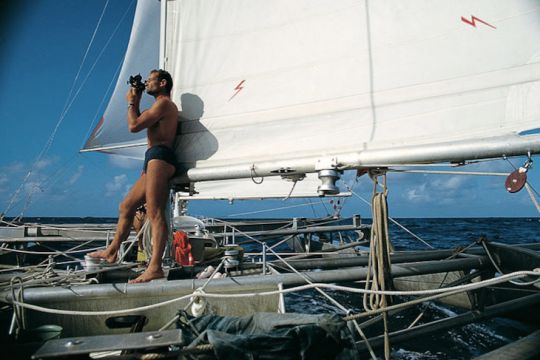
The day of her launch, the launch impresses! The trimaran is so much ahead of time : two-winged pivoting masts, fully battened mainsail, three aluminium linking arms that connect the symmetrical floats to the central hull. Very quickly, the speed is there! The 18 knots are reached very easily, which is twice the speed of Pen Duick III! The trimaran is sailing at 10 knots...
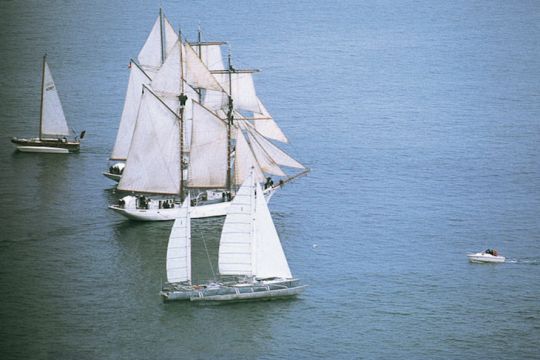
A difficult first race
However, during the delivery trip between Lorient and Plymouth to join the fleet of competitors in the OSTAR âeuros, it quickly became apparent that the boat had not been properly prepared. The autopilot control broke down above 10 knots, while the boom fitting broke. Nevertheless, Tabarly set off from Plymouth to cross the Atlantic, but was soon stopped in his tracks by a collision with a cargo ship. Forced to return to Plymouth for repairs, he crossed the line again three days later, but this time encountered autopilot problems that forced him to abandon...
